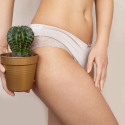Selecting the Ideal Hair Mask: An In-Depth Guide
 Choosing the right hair mask can significantly impact the health and appearance of your hair. With a variety of options available, understanding the composition and function of each mask is crucial for making an informed decision. This guide will explore how to select the best hair mask by focusing on its ingredients and application methods.
Choosing the right hair mask can significantly impact the health and appearance of your hair. With a variety of options available, understanding the composition and function of each mask is crucial for making an informed decision. This guide will explore how to select the best hair mask by focusing on its ingredients and application methods.Understanding Hair Mask Ingredients
Hair masks come with a diverse range of ingredients, each serving specific functions. To choose the most suitable product, it’s essential to understand what each component does:
Proteins: Essential for strengthening hair, proteins like keratin and silk help rebuild and fortify damaged strands. If your hair is brittle or chemically treated, look for masks enriched with proteins.
Oils: Natural oils such as argan, coconut, and olive oil provide deep hydration and nourishment. They are ideal for dry or coarse hair types needing moisture and shine.
Botanical Extracts: Ingredients like aloe vera, chamomile, and green tea offer soothing and healing properties. They can be beneficial for scalp health and overall hair vitality.
Vitamins: Vitamins A, E, and B complex are crucial for maintaining healthy hair. They promote growth, reduce breakage, and enhance the overall condition of your hair.
Matching Masks to Hair Types
Different hair types and conditions require specific types of masks to address their unique needs:
For Dry Hair: Masks with rich oils and butters provide intense moisture and prevent dryness. Look for products containing shea butter or jojoba oil.
For Oily Hair: Choose lightweight masks with ingredients like clay or charcoal that help absorb excess oil and maintain a balanced scalp.
For Damaged Hair: Opt for masks with reparative proteins and amino acids to restore strength and resilience. Keratin-enriched masks can be particularly effective.
For Curly Hair: Hydrating and defining masks with natural oils and emollients can enhance curl pattern and reduce frizz.
Application Tips for Maximum Effectiveness
Proper application can significantly impact the effectiveness of a hair mask:
Pre-Wash Application: For a deep conditioning treatment, apply the mask to dry hair before washing. This method allows for better penetration of nourishing ingredients.
In-Shower Application: Apply the mask after shampooing while your hair is still damp. Use a wide-tooth comb to distribute the product evenly.
Leave-On Time: Follow the recommended leave-on time for best results. Exceeding this time might not enhance benefits and could lead to buildup.
Regular Use: Incorporate the mask into your routine based on your hair’s needs. Weekly treatments are generally recommended for most hair types.
Evaluating Product Quality
To ensure you're getting a high-quality product, consider the following factors:
Ingredients List: Check for natural and high-quality ingredients while avoiding harsh chemicals like sulfates and parabens.
Brand Reputation: Choose brands with positive reviews and a reputation for effective hair care products.
Packaging: Look for masks in opaque or airtight containers to preserve the efficacy of the active ingredients.
Common Mistakes to Avoid
When using hair masks, avoid these common pitfalls:
Overuse: Using a mask too frequently can lead to product buildup and weigh down your hair. Stick to the recommended usage frequency.
Application on Scalp: Unless specified, avoid applying masks directly to the scalp, especially if they are heavy or oil-based, as this can lead to greasiness.
Ignoring Instructions: Always follow the manufacturer's instructions for optimal results and avoid experimenting with different application methods unless advised.
Conclusion
Selecting the perfect hair mask involves understanding the specific needs of your hair and matching them with the appropriate product ingredients. By focusing on your hair type, the ingredients in the mask, and correct application techniques, you can achieve healthier and more vibrant hair. Incorporate these insights into your hair care routine to enjoy the full benefits of your chosen hair mask.









